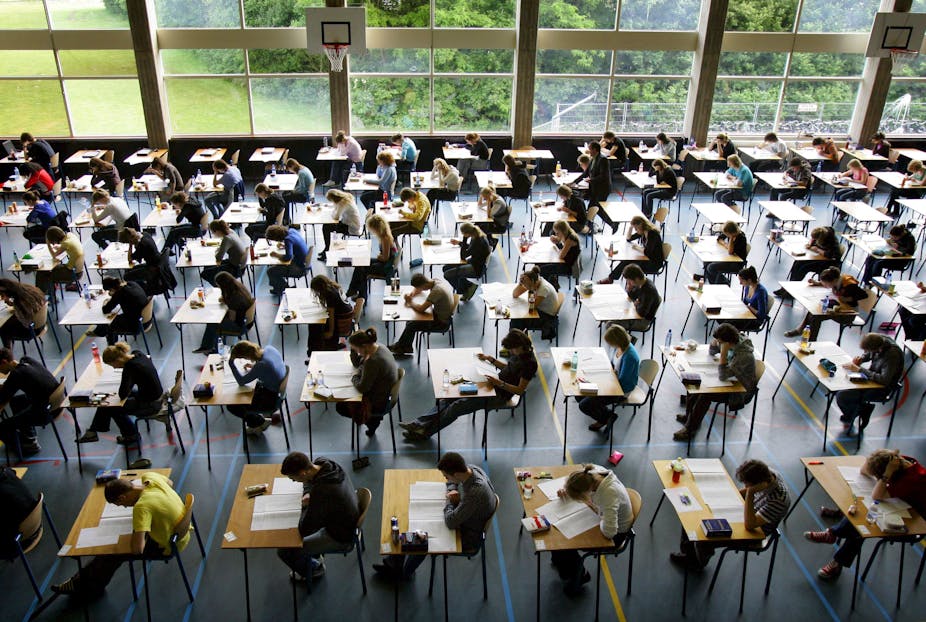Results from the Chinese university entrance exam, the Gaokao, were released last week. For students, it’s the long culmination of years focusing on tests and learning by rote.
Again and again, East Asian countries appear at the top in world education rankings. So the assumption goes, all Australia needs to do is to learn from the “best at tests”, and we, too, could make it up the ladder.
This was the fundamental basis of a recent Grattan Institute report into the education systems in Hong Kong, Korea, Shanghai and Singapore. Yet the assumptions underlying Catching up: learning from the best school systems in East Asia, cannot go unchallenged: they are misleading and even dangerous.
Australian vs Asian education
From my experience in Australia and East Asia, it is Australian students who have a far superior educational experience in which a wider range of subjects are taught and where the core business of learning goes beyond narrow test results.
The report’s author Dr Ben Jensen told a public audience after the release of the report that Hong Kong’s education system was “the best in the world” because they had got the “how” of education right. Teacher education in Singapore was the “gold standard”, while Shanghai had professional learning in schools with a focus on “continual improvement”.
Having lived and worked in Hong Kong and Singapore, I saw a major disconnect between these reports and my experiences. Closer to my experience was the Program for International Assessment (PISA) 2004 context information findings with Hong Kong students revealing they had a bad perception of their schooling with more than half claiming school had done little to prepare them for adult life.
This was at the same time that the test delivered by PISA – an OECD sponsored literacy, numeracy, science and “problem solving” exam – had these students ranked among the best in maths, problem solving and science.
A testing paradox
This paradox highlights the key problem with the East Asian education systems, as well as the danger of holding them up as something to emulate.
What the Grattan report calls an “unrelenting” focus on learning in the East Asian system basically refers to performing well in tests. Learning is not defined with any clarity, while recall of content reigns supreme.
Singapore’s teacher education program has cut subjects such as the history and philosophy of education and curriculum and assessment design because these subjects were not “leading to sufficient increases in student learning”. Certainly they are not assessed in PISA so why not get rid of them? They wanted a focus on “mastery of content”, which in practice means content recall in tests.
In the seminar, Dr Jensen advised that these countries spend much less than Australia on technology. This is also not surprising since the PISA tests don’t require any skills associated with the use of technologies in any way, shape or form. So why would you waste resources on them and not focus on tests, tests and more tests?
We are also advised that Hong Kong maintains high levels of equity. This is in a system where in 2010 only 35,000 out of 127,000 Form 5 students were allowed to proceed to Form 6 – even though 67% of them met the requirements. This is in a country where 13-year-old mainland Chinese students and 11 year-old-migrant Pakistani students are placed in 6-year-old classes because their Cantonese and English is “not up to standard”.
The justification is that such students cannot be allocated resources to upgrade their skills in these areas since they would then have an advantage over Hong Kong students not offered such an option. You can be assured when they are 15 years old they will not participate in the PISA cohort.
The report maintains that the problem-solving aspect of the PISA test ensures that rote learning cannot explain this performance. But Hong Kong students practice books full of the examples of “problem solving”. I can assure you that you can teach problem solving strategies like the ones included in PISA, and in fact, you can practice them day in and day out.
New research
I have recently returned from working in a teacher education institution in Hong Kong and conducting research in local schools that involved systematic observations of 3- to 15-year-olds in low socio-economic zones.
I have observed none of the phenomena ascribed to the Hong Kong system in the report.
Dr Jensen needs to realise that just because something is stated in a policy document does not mean that it is reflected in practice across schools in Hong Kong.
The report maintains that “effective intervention begins with a deep analysis of learning”. Learning is the focus – yet all the examples of learning are solely related to the regurgitation of facts in a test. There are no references to being creative or showing the ability to work towards an agreed goal in a collaborative partnership.
I have been in situations where I have asked Asian students “what do you think?” And they reply “tell us what you think and we will think the same”. Is that really the mark of a gold star education system?

